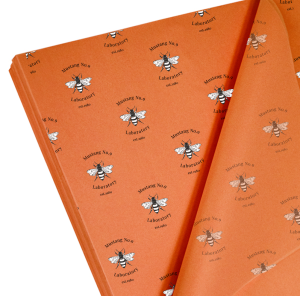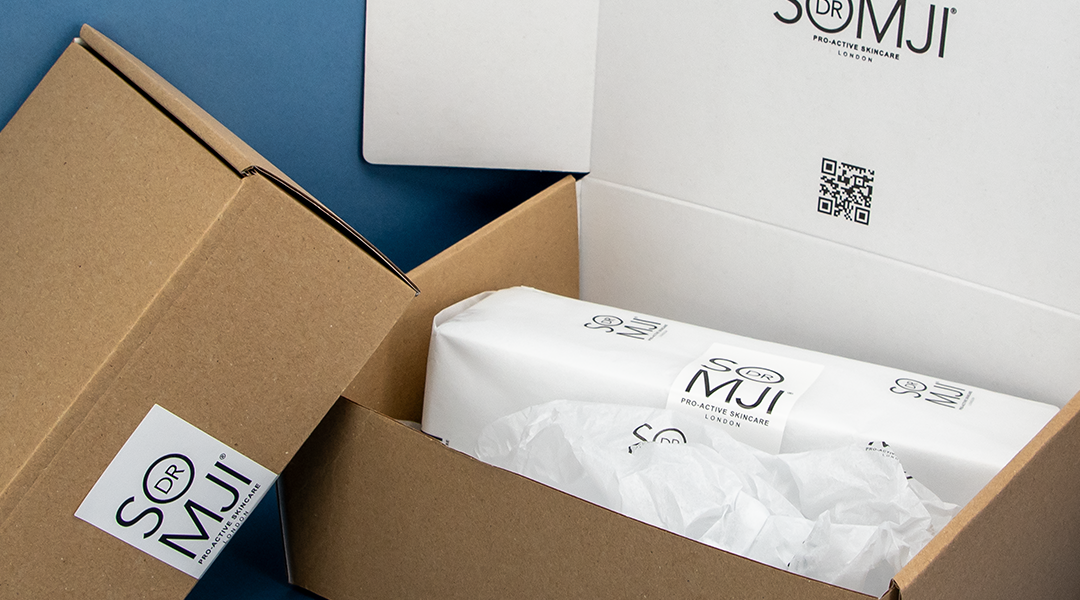Tissue Paper 101: Your Questions, Answered
Confused about tissue paper and it’s environmental impact? We don’t blame you. The internet is full of contradictory information about tissue paper, what it’s made from and how it should be disposed of. That’s why we’ve talked directly to our manufacturers for clarity on all your tissue paper questions, specifically the ones we stock here at Packaging Supplies.
What is Tissue Paper & What is it Made of?
Tissue paper is a thin, lightweight paper that’s perfect for gift-wrapping and arts and crafts projects. It can be made in various ways, using virgin paper, recycled paper, or wood pulp.
Nearly all tissue paper we offer at Packaging Supplies is crafted from virgin wood pulp with a 30% recycled pulp content. (Just a heads up, our TPPINK, TPDARKBLUE, and TPDARKGREEN products are made from virgin pulp only.)
Non-toxic inks are used to colour our tissue paper, and once dyed, the sheets are generally bleed-resistant, ensuring the colour will not tarnish garments, artwork, and other delicate items. However, we suggest avoiding coloured tissue paper in damp conditions – just to be on the safe side!
To keep things straightforward, we stock machine-glazed, acid-free tissue paper because of its versatile applications, which you can learn more about below.
How is Tissue Paper Made?
Tissue paper starts its journey as a pulp mixture and goes through a pulping process, followed a series of refining and pressing steps to create those colourful sheets we love. Once that’s done, the tissue paper is dried, cut, and neatly packaged into reams.
What is a Ream of Tissue Paper?
A ream of tissue paper is a standardised quantity that consists of 480 sheets, as regulated in the UK by the ISO (International Organisation for Standardisation). This standardisation ensures consistency and uniformity across the industry, making it easier for consumers and businesses to understand and compare products. The concept of a ream dates back to the early days of papermaking, where it served as a convenient way to measure and sell paper in bulk.
We offer tissue paper in half reams, which contain 240 sheets. This option provides flexibility for customers and small business owners who may not require a full ream, allowing them to purchase smaller quantities that better suit their needs.
Different Types of Tissue Paper and Their Uses
Machine Glazed Tissue Paper
Machine glazed tissue paper is a type of tissue paper that is characterized by its smooth, glossy finish on one side and a rougher texture on the other. This unique finish is achieved through a specialised manufacturing process where the paper is pressed against a heated cylinder, known as a Yankee dryer, which imparts the glossy sheen. The smooth side of the machine glazed tissue paper is often used for applications where a polished appearance is desired, such as in gift wrapping or decorative packaging.
Acid Free Tissue Paper
Acid-free tissue paper is a specialised type of tissue paper that is manufactured without the use of acidic chemicals, which can cause deterioration over time. This makes it an ideal choice for preserving delicate items, such as clothing, handbags, ceramics and antiques, as it helps prevent yellowing and degradation. The absence of acid in the paper ensures that it will not react with the materials it comes into contact with, making it a preferred option for long-term storage and protection. Acid-free tissue paper is often used in museums, galleries, and by collectors who need to safeguard their valuable items from potential damage caused by acidic materials.
Coloured Tissue Paper
Coloured tissue paper is often chosen to enhance a brand’s aesthetics by adding a vibrant and visually appealing element to packaging and presentation. This type of tissue paper comes in a wide array of colours, allowing brands to select hues that align with their identity. By incorporating coloured tissue paper into their packaging, companies can create a memorable unboxing experience for customers, reinforcing brand recognition.
Printed Tissue Paper 
Brands looking to personalise their packaging further can opt for printed tissue paper where logos and messages can be applied. We can quote for this option on an individual basis, with lead times and MOQ’s that vary depending on the full specification required.
Tips for Choosing the Right Tissue Paper
When you’re picking out the perfect tissue paper, there are a few key things to keep in mind. First off, think about what you’ll be using it for. Is it meant to wrap delicate treasures for safekeeping? Or maybe you’re looking to jazz up your packaging and boost your brand’s look? Perhaps it’s for personal projects or crafting fun?
As you compare different tissue paper options, pay attention to the GSM (grams per square meter) measurement—it’s an important detail that we’ll explain more about below.
And don’t forget to think about the environment! Does the tissue paper match your brand’s eco-friendly values, include recycled materials, and can it be responsibly disposed of by the end user?
What Does GSM Mean?
GSM or grams per square meter, is a standard unit of measurement used to assess the thickness and density of various types of paper. When it comes to tissue paper you will usually find a GSM ranging from 10 to 35, with lower numbers indicating a thinner, more translucent product. For comparison, regular printer paper typically has a GSM of 90 to 100, while business cards that are much thicker range from 350 to 450 GSM.
The GSM of tissue paper influences its overall quality and affects both cost and environmental impact – the higher the GSM, the more resources and energy are consumed during production. Understanding this measurement can help businesses select the appropriate product for their needs while making eco-friendly choices.
Is Tissue Paper Safe for Food Wrapping?
Our tissue paper is not designed for direct contact with food or for wrapping food items. For food-safe alternatives, consider visiting Takeaway Packaging, where you can find plain white greaseproof paper or branded greaseproof paper suitable for food use.
The Environmental Impact of Tissue Paper
While we cannot speak for other companies, we’re happy to share that our manufacturers have confirmed that all of our tissue paper is recyclable! Plus, it’s naturally biodegradable and will break down in a composting environment in just 2-4 weeks.



